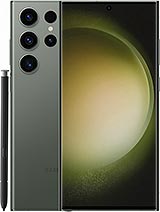Hands-free phone warning is wrong, insists scientist
The debate over hands-free mobile phone kits intensified yesterday as a top scientist insisted that the Consumers' Association was wrong to claim that the kits can increase the radiation received in the brain.
The debate over hands-free mobile phone kits intensified yesterday as a top scientist insisted that the Consumers' Association was wrong to claim that the kits can increase the radiation received in the brain.
The Department of Trade and Industry also said it had "reservations" about the reiterated claims by the CA, which first said in April that hands-free antenna kits could actually act as an aerial and beam more energy into the brain than simply holding the phone in the hand beside the head.
Dr Alan Preece at Bristol Royal Infirmary, who has carried out a number of studies into mobile phone safety - including hands-free kits - said: "I don't believe these results because if you actually could increase the output of the phone by 350 per cent, as they are claiming happens, then every phone manufacturer would be beating a path to the door of the company making it possible."
Dr Preece also criticised the lack of rigorous detail in the study, which has not been published in a scientific journal.
But Helen Parker, editor of the CA's magazine Which?, said: "As in our earlier tests, it's clear that consumers can't rely on hands-free kits to reduce radiation emissions at the brain from mobile phones. Although these kits can reduce radiation, they can also increase it significantly, depending on where you position the phone and kit. Unfortunately, there is no way that consumers can work out the best position to reduce radiation."
The CA said it had found flaws in the DTI's techniques, which used a mobile phone on a table beside a dummy head filled with sensors. According to ERA Technology, which carried out the study for the CA, the position of the wire holding the microphone and earpiece can significantly affect the amount of radiation passed into the head.
The CA did, however, stand back from the even more contentious question of what effect the emitted radiation might actually have. "We are not saying that it is dangerous," said a spokeswoman. "We haven't explored the health effects."
Which? did say it had uncovered a potential solution: fitting ferrites - metallic or ceramic compounds designed to absorb electromagnetic fields - on hands-free kit wires below the ear appeared to cut radiation into the ear.
But the group said the mobile phone industry needed to carry out further tests.
The DTI and Dr Preece separately said that they were satisfied with their tests. "We have reservations about the probes they were using and the gel," said a DTI spokesman. "Our results, which found that these kits reduce radiation, remain consistent with every other study, including one done by the Australian Consumers' Association." Dr Preece said that his studies also agreed with findings that the risk fell.
Separate studies have found electromagnetic radiation from mobile phones does warm brain tissue, that some strains of mice have developed cancer in tests, and that others become disoriented. But despite government, industry and independent research around the world, it remains unproven that mobile phones pose a risk to humans.
Research & Studies
Making Information and Communication Technology (ICT) a central part of efforts to decrease CO₂ (Carbon Dioxide) output has the potential to reduce..
Research & Studies
New research from Ericsson (NASDAQ:ERIC) has suggested that mobile penetration is outpacing births rates across the Middle East. According to the..
Research & Studies
Thanks to mobile broadband, an ever-increasing number of people and devices are connected. This phenomenon provides more opportunities for operators,..

 Vodafone Oman
Vodafone Oman Emirates Telecom
Emirates Telecom  Ooredoo Om
Ooredoo Om Ooredoo Qa
Ooredoo Qa stc Bahrain
stc Bahrain Orange Egypt
Orange Egypt Mobily
Mobily Zain Jo
Zain Jo omantel
omantel STC
STC Emirates Du
Emirates Du Asiacell
Asiacell Etisalat Egypt
Etisalat Egypt  Telecom Egypt
Telecom Egypt jawwal
jawwal Orange Jo
Orange Jo Umniah
Umniah Zain Sa
Zain Sa Bahrain Batelco
Bahrain Batelco Zain Bh
Zain Bh Wataniya palestine
Wataniya palestine Kuwait Viva
Kuwait Viva  Zain Kw
Zain Kw Vodafone Qa
Vodafone Qa MTN Syria
MTN Syria Syriatel
Syriatel Sabafon
Sabafon Zain Iq
Zain Iq MTN Yemen
MTN Yemen Ooredoo Kw
Ooredoo Kw Vodafone Egypt
Vodafone Egypt  Samatel
Samatel Huawei
Huawei Samsung
Samsung MOTOROLA
MOTOROLA Lenovo
Lenovo Alcatel
Alcatel LG
LG Nokia
Nokia Sony Ericsson
Sony Ericsson HTC
HTC BlackBerry
BlackBerry Siemens
Siemens Acer
Acer Asus
Asus Sony
Sony VK
VK APPLE
APPLE BenQ-Siemens
BenQ-Siemens Sagem
Sagem Eten
Eten HP
HP Panasonic
Panasonic Amoi
Amoi Toshiba
Toshiba Sharp
Sharp Sonim
Sonim Bird
Bird Mitac
Mitac Philips
Philips Vertu
Vertu Pantech
Pantech Micromax
Micromax Maxon
Maxon Haier
Haier I-mate
I-mate Gigabyte
Gigabyte I-mobile
I-mobile Kyocera
Kyocera BenQ
BenQ Microsoft
Microsoft Telit
Telit Connect
Connect Sendo
Sendo Mitsubishi
Mitsubishi SEWON
SEWON NEC
NEC DELL
DELL Thuraya
Thuraya Neonode
Neonode Be
Be Qtek
Qtek Bosch
Bosch Palm
Palm MWG
MWG Fujitsu Siemens
Fujitsu Siemens XCute
XCute WND
WND INQ
INQ O2
O2 Innostream
Innostream Benefon
Benefon Google
Google



















